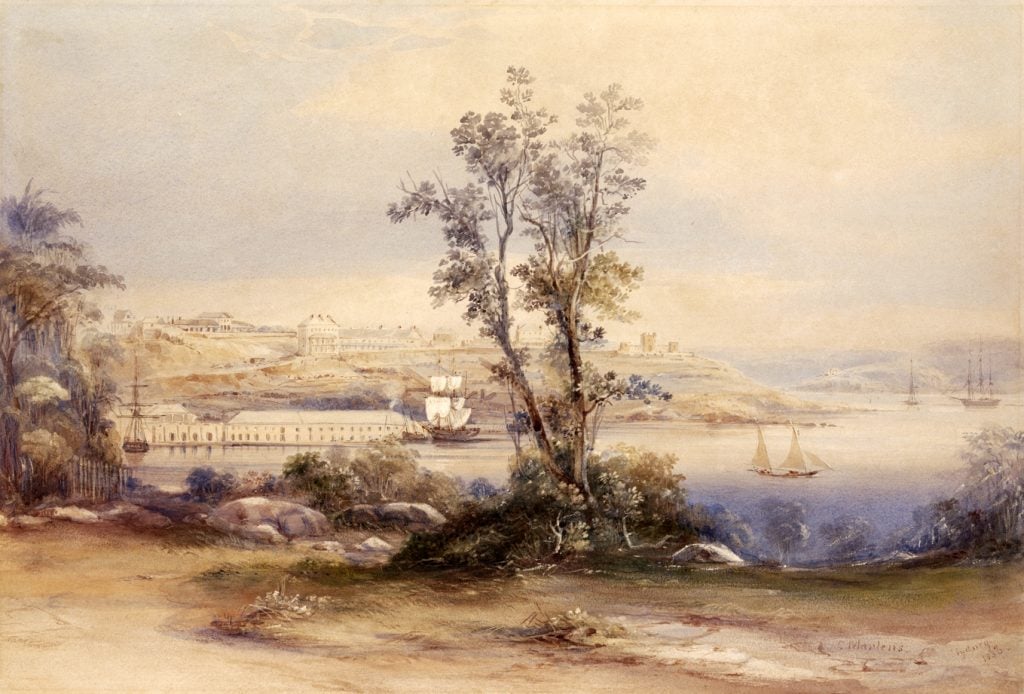
The Architecture of the Tasman World, 1788-1850
Fabrications: The Journal of the Society of Architectural Historians, Australia and New Zealand invites papers for a special guest issue (Vol. 29, No. 3, 2019) on “The Architecture of the Tasman World,” edited by Alex Bremner and Andrew Leach. Papers are due by 28 March 2019.
The nineteenth-century architectural history of what Philippa Mein-Smith and others have recently termed the “Tasman world” has long been shaped by the often separate national historiographies of Australia and New Zealand. Developments in the region’s colonial architecture from the 1780s onwards have thus fed narratives of national foundations, problematic and otherwise. This issue of Fabrications calls for papers that work against the grain of those nationalist narratives by addressing the architecture and infrastructure of those colonial industries operating across the early colonies of New South Wales, Van Diemen’s Land and New Zealand and connecting that “world” to economies and relationships both within the British Empire and beyond, across what has controversially been named the “Anglosphere,” and in global architectural geographies defined by trade. Papers will return to the colonial era of the South Pacific informed by the gains of post-colonial history, four-nations British historiography, studies of global colonial networks and systems, and an appreciation for “minor” forms of historical evidence and architectural practice. The issue will therefore offer a fresh consideration of the architecture of the Tasman world from the 1780s to the 1840s in its historical circumstances, exploring architecture’s different registers: architecture across three different registers: intentioned works definitively cast as Architecture; the “grey” architecture (after Bremner) of industries, transhipping and colonial infrastructure; and as an analogy for the relationships, systems and structures of the colonial project and its economic underpinnings. Papers may move around and across the Tasman Sea to position architecture in relation to such “industrial” activities as agriculture, whaling and sealing, banking, timber getting and religion. Building on a rich session at the Fifth International Meeting of the European Architectural History Network in Tallinn, papers in will contribute to a post-nationalist architectural history of the Tasman colonies that figures the place of this region in the nineteenth-century British world and beyond.
Dr Alex Bremner, Edinburgh College of Art, University of Edinburgh
Prof Andrew Leach, School of Architecture, Design and Planning, University of Sydney
Guidelines for Authors
Papers should be submitted online by the due dates identified above.
The Editors consider essays of 7000 to 9000 words (including endnotes). Papers should be submitted as Word documents. Authors should use the footnote function of Word, but no automatic referencing programs (such as Endnote). Papers should be submitted with an abstract (200 words) at the beginning of the paper and a brief author biography (80 words), images and image captions. Abstracts are published at the beginning of papers. All papers published in Fabrications are blind peer-refereed by two readers.
Instructions for authors can be found on the Taylor & Francis website. Proposals for reports or for reviews of books, exhibitions and other events of interest to the membership of SAHANZ can be made to the Reviews Editor, Farzaneh Haghighi [].
Image Specifications
For the refereeing process, please add a list of captions at the end of the text document, but also submit low-resolution images of illustrations as separate files {or embedded in a separate pdf file with captions} (72dpi jpeg files). Once a paper is accepted for publication, high-resolution images should be submitted as 300 dpi tiff files, at a minimum of 100mm wide with a separate list of captions indicating permissions.
Authors are responsible for securing all permissions and paying all fees to reproduce images in Fabrications. Authors must meet UK copyright regulations. For information, see: https://authorservices.taylorandfrancis.com/editorial-policies/
Anoma Pieris and Mirjana Lozanovska, Co-Editors
Image credit: State Library of New South Wales